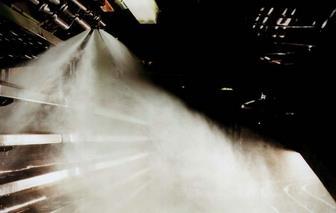A code of practice has been published to help designers of fire suppression systems
Environmental concerns about effluent from water-based fire suppression has increased interest in watermist systems. Until now, however, there has been no official guide to their design and installation. The Fire Industry Association (FIA) has remedied this with publication of its Watermist Code of Practice.
Watermist systems are being used in a wide range of commercial applications, including IT, telecommunications, power generation and food processing facilities. They rapidly suppress fire but in a more environmentally responsible way because they use less water than conventional deluge systems. This means there is less run-off and therefore reduced effluent, which lessens the impact on the environment.
The 37-page voluntary code, available free on FIA’s website, is Europe’s first such guidance on watermist, according to the association. It covers definitions, detection, components, pressurisation and commissioning as well as inspection and maintenance.
Additional benefits include the requirement for a smaller mechanical footprint than conventional water suppression systems. The piping, pumps and tanks are smaller, which ensures watermist systems are easier to accommodate in premises where space is at a premium.
“The code has been written with the specific needs of insurers, architects and risk assessors,” says Bob Whiteley, chairman of the FIA committee that wrote the code.
“It is providing them with all the information required to specify a system correctly. Although it is voluntary, we see it taking on a similar role to that produced for gaseous extinguishing systems, which has effectively become the industry standard.”
The code is available free at www.fia.uk.com
Original print headline - Watermisting explained
Source
Building Sustainable Design






















No comments yet